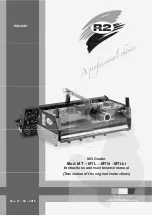
MANUAL DE INSTRUCCIONES CODIGO 80005 REV F Mayo/2011
(Sujetas a modificaciones sin previo aviso) Pag.: 7
J
.P. SELECTA s.a.
Autovía A-2 Km 585.1 Abrera 08630 (Barcelona) España
Tel (34) 93 770 08 77 Fax (34) 93 770 23 62
e-mail: [email protected] - http://www.jpselecta.es
INDICACIONES COMUNES A TODOS LOS BAÑOS:
PUESTA EN MARCHA:
1. Llenar el baño de líquido.
2. Conectar el baño a la red eléctrica.
3. Accionar el interruptor de puesta en marcha (1),
al mismo tiempo se iluminará el piloto de señali
-
zación de red (verde) (5).
4. Girar el mando del regulador de temperatura (2)
de menos a más, según la temperatura a la que
se desee trabajar. Al mismo tiempo se iluminará el
piloto de funcionamiento del calefacción (amarillo)
(3).
5. Transcurrido un tiempo prudencial, el piloto de
funcionamiento del calefactor (3) empezará a
funcionar de modo intermitente. Cuando el ciclo
de dichas intermitencias sea uniforme, indicará
que la temperatura del líquido se ha estabilizado.
6. La graduación de la escala del termostato sólo
sirve de referencia, siendo la temperatura real la
indicada por un termómetro lector.
7. Vigilar la evaporación del líquido del baño, e ir re
-
poniéndolo a fin de no dejar nunca al descubierto
el calefactor.
BAÑOS EQUIPADOS CON TERMOSTATO DE SE
-
GURIDAD:
El límite inferior de temperatura de trabajo del termos
-
tato de seguridad es de 50ºC aprox. La temperatura
de trabajo del termostato de seguridad debe ser como
mínimo 5ºC superior a la de trabajo. El proceso de
ajuste del termostato de seguridad es largo, por este
motivo es especialmente práctico cuando se trabaja
habitualmente a la misma temperatura.
1. Con la ayuda de un destornillador girar el termos
-
tato de seguridad al máximo en sentido horario,
mediante el mando (5).
2. Seleccionar mediante el botón del regulador de
temperatura (2) la temperatura de disparo del
termostato de seguridad.
3. Poner en marcha la máquina y dejar que el baño
se estabilice.
4. Una vez estabilizado el baño, girar lentamente en
sentido antihorario el mando (5) del termostato de
seguridad, hasta que se dispare y se encienda el
piloto rojo (4).
5. Esperar a que el baño se enfríe para rearmar el
termostato de seguridad mediante el pulsador (6).
6. Seleccionar la temperatura de trabajo del baño
mediante el botón del regulador de temperatura
(2).
COMMON INDICATIONS FOR ALL BATHS:
STARTING UP:
1. Fill the bath with liquid.
2. Connect the bath into the mains .
3. Turn on the main switch (1). The green indicator
lamp (5) will light up.
4. Turn on the temperature control thermostat (2)
from low to high according to the working tem-
perature. The heater operation indicator lamp (3)
(amber) will light up.
5. After some time, the heater operation indica-
tor lamp (3) will begin to operate intermittently.
When the cycle of these intermittences becomes
uniform, that will indicate that temperature of the
liquid is stabilized.
6. The thermostat scale graduation is only useful as
a reference, because the real temperature is the
one shown by a thermometer introduced into the
liquid.
7. Be careful with liquid evaporation. The heater
element must ALWAYS be covered with liquid.
Replenish when necessary.
ADJUSTMENT FOR THE SAFETY THERMOSTAT:
(Only for the baths equipped with it)
The low limit of working temperature for the safety
thermostat is nearly 50ºC. The desired temperature
of the safety thermostat must be at least 5ºC above
the working temperature. The adjusting process of the
safety thermostat is long. For that reason, the safety
thermostat is useful when the users normally work at
the same temperature.
1. Turn the safety thermostat screw (5) clockwise to
the maximum.
2. Select with the temperature control knob (2) the
desired temperature of the safety thermostat.
3. Turn on the bath and leave it to stabilize.
4. When the bath is stabilized, slowly turn the safety
thermostat screw (5) anticlockwise until it clicks
and the red indicator lamp (4) lights up.
5. Wait until the bath cools to reset the safety ther-
mostat with (6) button.
6. Select the working temperature of the bath with
the temperature control knob (2).






























